30 Mar 2025 Find an impressive Native American art museum in Petit Jean State Park
Rising from the Arkansas River Valley, Petit Jean Mountain is 1,207 feet above sea level at its highest point and offers visitors spectacular views. Many Arkansans have visited Petit Jean State Park, which is on the mountain near Morrilton in Conway County.

On one side of the mountain, a trail leads to a huge bluff shelter called Rock House Cave. From the parking area, hikers travel only about a quarter of a mile over somewhat uneven ground and across “turtle rocks” to arrive at the shelter, which hikers can enter. Rock House Cave was once home to Native Americans starting about 8,000 years ago, according to archeology.uark.edu.
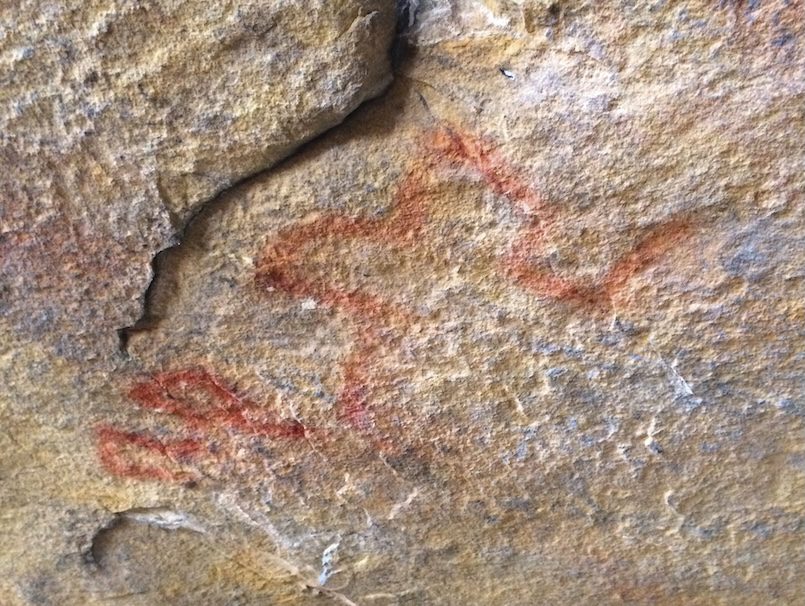
“It is remarkable that one of the most special places in Arkansas, Petit Jean State Park, also has this site for visitors to experience,” said Petit Jean State Park Superintendent Joe Buckley.
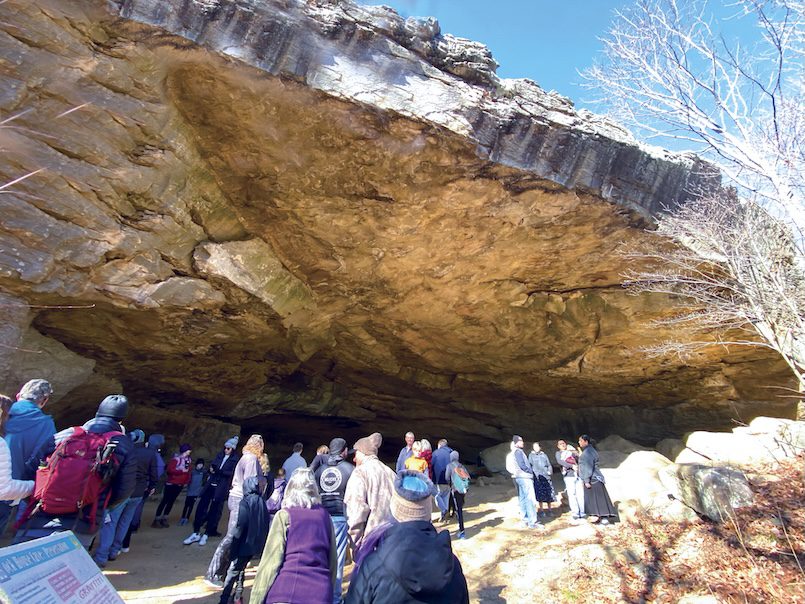
Long ago, bluff-dwelling Native Americans likely used the shelter as their home and lived as nomads, hunters and gatherers. They hunted with spears because they had not yet invented the bow and arrow. Evidence of their existence was left behind in pictographs located high on the back walls of the cave. The shelter contains at least 105 rock art images.
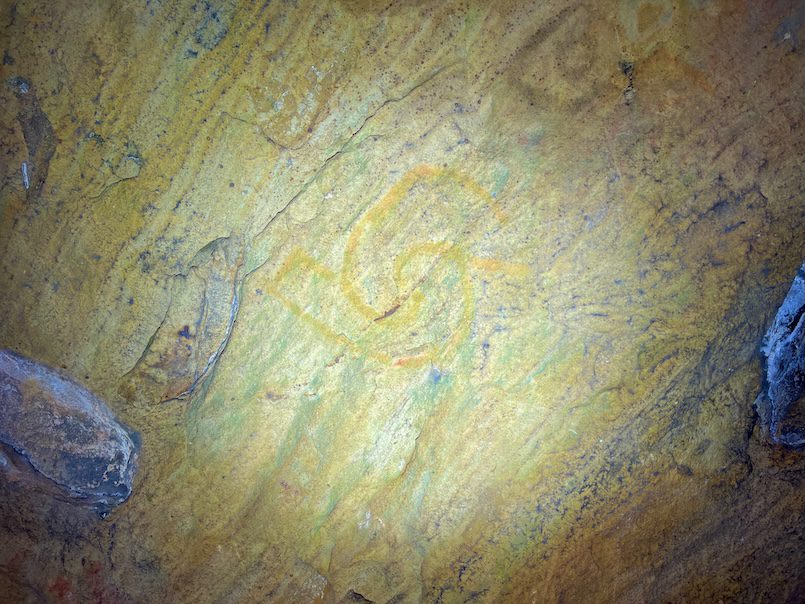
One of the more interesting examples of rock art in Rock House Cave shows a very distinctive-looking fish found in the nearby Arkansas River. The pictograph, which is painted in red pigment on the ceiling, is a paddlefish. It can be hard to see, but the distinctive elongated head is present, and the fins are in the right position. Some people suggest that the image shows the fish as it would look to someone seeing it from the riverbank or a boat. The image near the fish appears to represent a basketry fish trap. Fish traps of this sort were used by Native Americans. “Much of the rock art is painted with iron oxide and is rust-like,” Buckley said. “Many believe the art dates to the late Woodland [Era], Mississippi [period], protohistoric.”
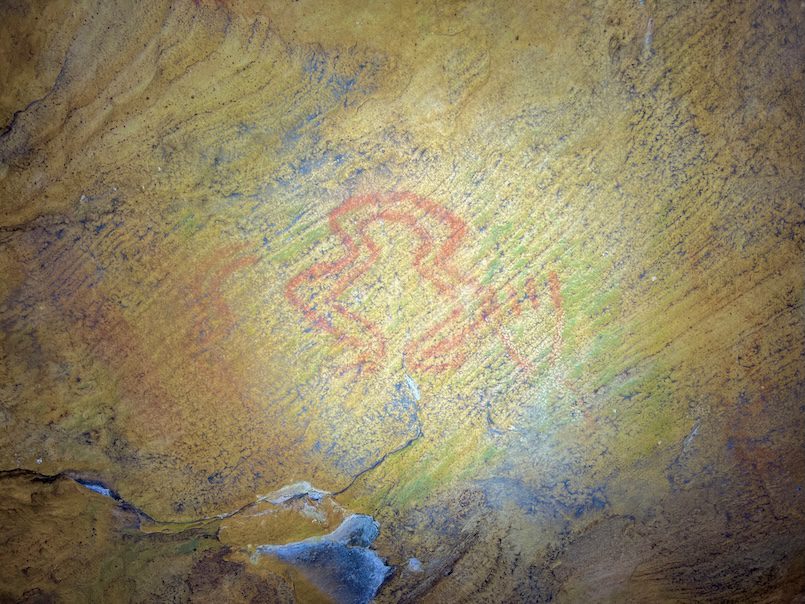
The pictures tell a story that was important to those who created it. Today, we can only imagine what they mean. Rock House Cave is an archaeological historical site, protected by state law. “Observers can look but should never touch,” Buckley said. “Even scratching their name with a rock on the cave wall can permanently damage these pictographs. When you visit, please help us preserve the integrity of this site and protect its historical significance.”
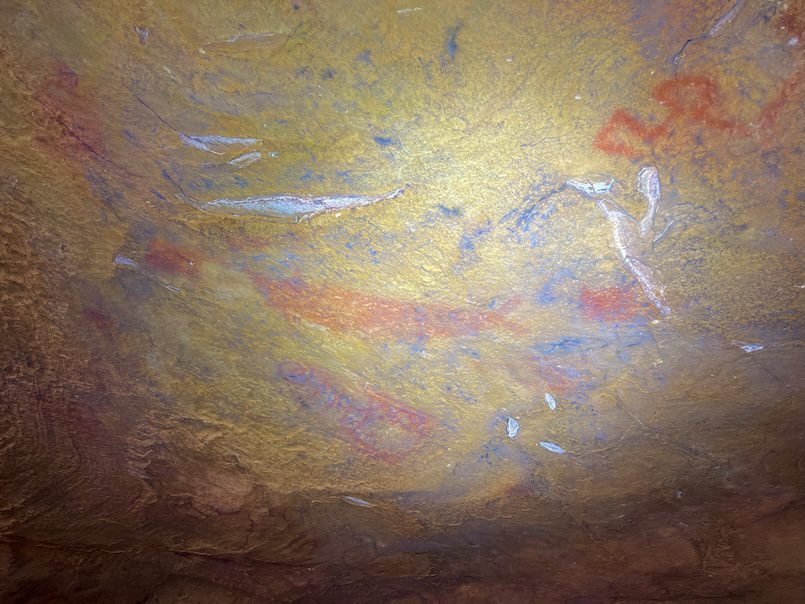
The pictures are divided into three categories: rock art, which is images carved, drawn or painted onto immovable rock surfaces; petroglyphs, which are images carved or engraved into rock; and pictographs, which are drawn or painted images.
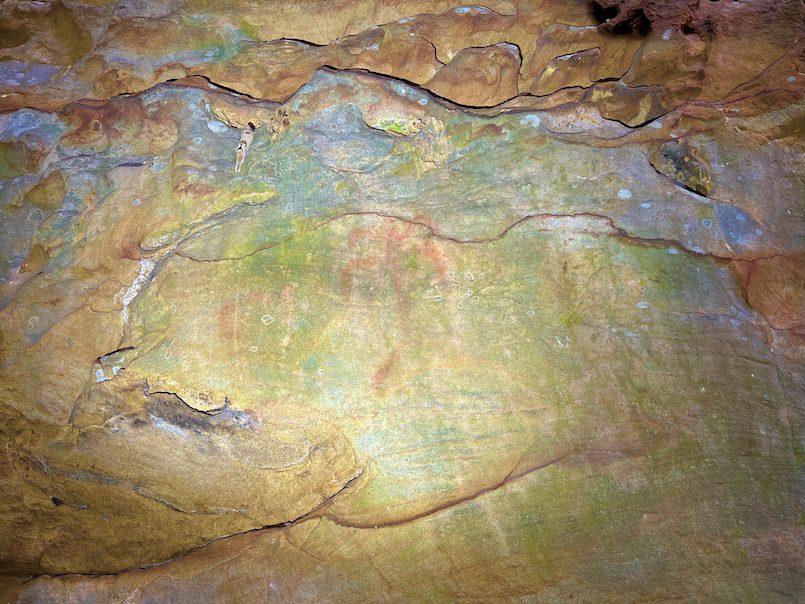
Back to the “turtle rocks,” which are part of the journey to see the Native American art museum. The astonishing geological formations mesmerize kids and adults alike. They are mounded, polygonal structures that resemble turtle shells, according to arkansasgeological.wordpress.com. The turtle-like features are brown to light gray and massive. They are medium-grained sandstone that was deposited during the Pennsylvanian Period by ancient river systems, but the process that generated “turtle rocks” is not clearly understood, according to the site.
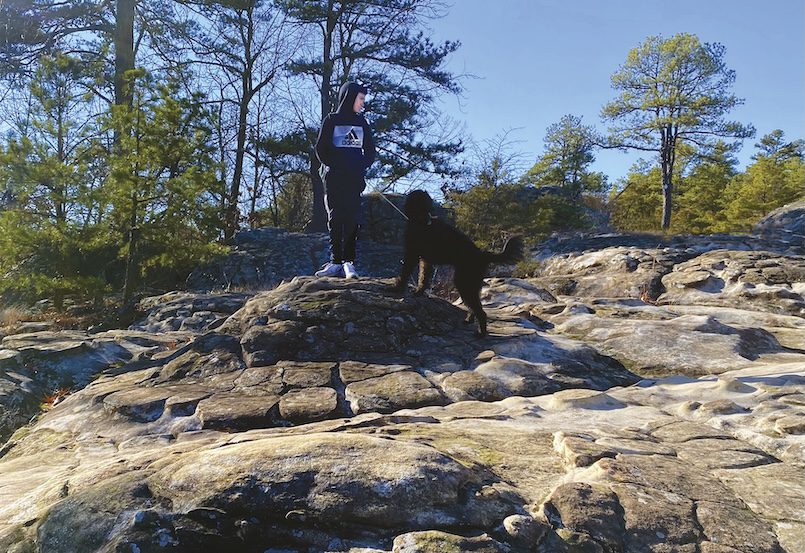
“I invite readers to explore Petit Jean State Park. As superintendent, I ask all park visitors be respectful of the resources and have a safe and wonderful experience,” Buckley said.








